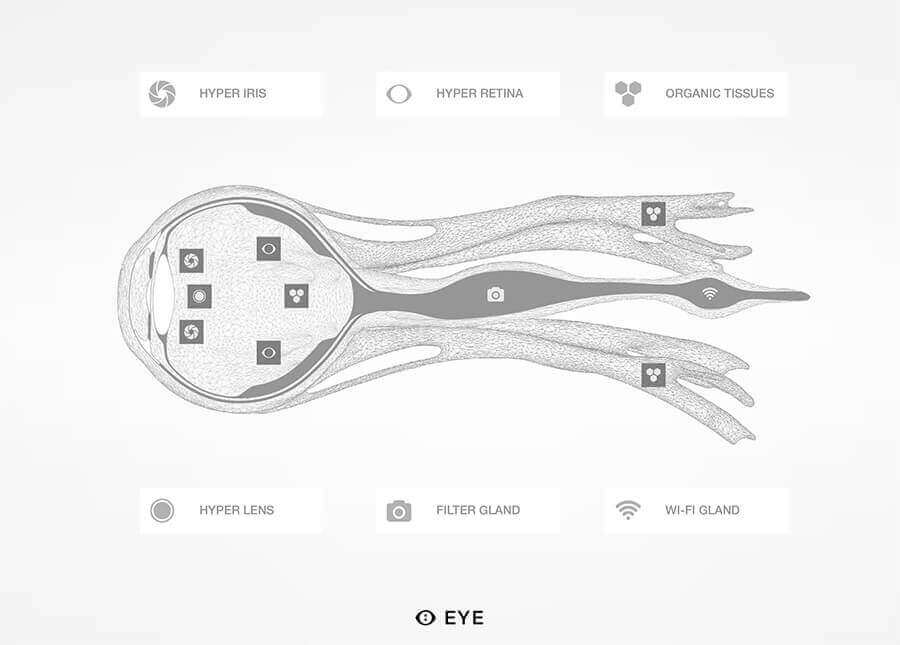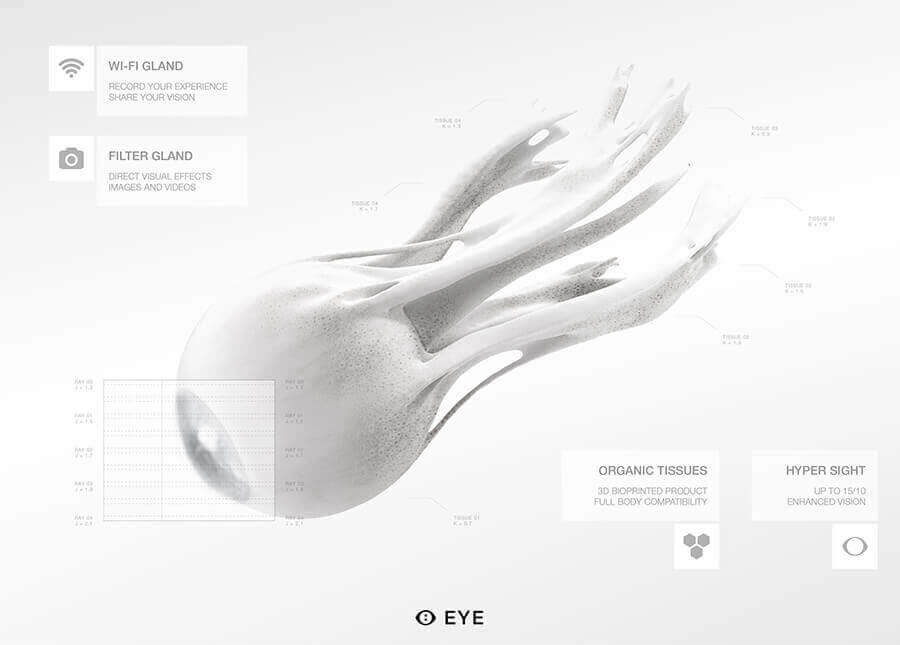Too long, read later: With companies like Organovo, 3D printed organs are making progress. Now Italian company MHOX claims they will offer 3D printed eyeballs by 2027.

When it comes to technology, distinguishing between a bold vision and a downright crazy idea isn’t always simple. An example: The Italian company MHOX claims they will offer 3D printed eyeballs by 2027; WiFi included. 3D printed organs aren’t new. But what MHOX want to achieve is not an enhancement for the human eye, it’s a whole substitution of a sensory organ with improved features and additional gimmicks. Their name for the 3D printed organ is this stroke of genius: EYE (Enhance your Eye).
MHOX’ vision relies on replacing the human eye with their synthetic 3D printed eyeballs. Until 2027, they want to figure out not only how to cure blindness, but also connect the human eye via WiFi to record and share your visual experience as a new form of social media. Also, augmented reality is addressed. Imagine Google Glass without having to wear glasses.
Expected on the market in 2027?

Functional body parts allowing us to enhance our eyesight? Or even better, enabling the blind to see? Giving our eyes more capabilities, even some we can now achieve with the help of external devices, seems to be a alluring prospect. The EYE products are expected to be available on the market by January 2027.
That’s a statement that works well to get some attention for a company that works with 3D customizing, body parts and accessories. Most 3D printing news sites seem to buy it regardless of how ungrounded the claims are. They are misleaded by the statement that EYE is expected to be available on the market by January 2027.
If I’m reading that often enough with a bit of excitement, I may start to believe it myself. But the official MHOX website also states that it is simply a concept they were working on. Only a concept is mentioned, no research, no execution, and of course no prototypes. No matter where you do your research about the company, no affiliation with medical universities, research institutions or anything similar pops up.
The only credible source is the University of Cambridge

The only profound news regarding the topic of 3D printing eyes comes from the University of Cambridge. Here 3D printing was used to produce artificial tissue grafts made from human retina cells. This means, in principle, two cell types from a rat’s retina can be 3D printed. The cells were alive and grew, which is a good foundation to 3D print and/or grow a whole retina eventually. Also, Organovo is experimenting with heart and liver cells, which also started to grow.
This does not mean that these can be used by the rats or anyone else yet, so the actual use is exactly zero. Research may show new results. But it’ll be a long way to go before any organism can profit from 3D printed organs that are connected to our nerves in a way it could be called an organ.
So will we see 3D printed eyes by 2027? I can’t make a guess. The people at MHOX in their game of make-believe have a clear vision how 3D printed eyeballs should be. Probably it won’t be MHOX we hear of when 3D printed eyes are announced.
License: The text of "Do they really want to 3D print human eyes?" by All3DP is licensed under a Creative Commons Attribution 4.0 International License.